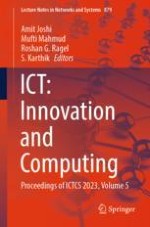2024 | OriginalPaper | Buchkapitel
Brain-Inspired Traffic Incident Detection for Effective Communication
verfasst von : M. Saravanan, Sravanth Chowdary Potluri
Erschienen in: ICT: Innovation and Computing
Verlag: Springer Nature Singapore
Aktivieren Sie unsere intelligente Suche, um passende Fachinhalte oder Patente zu finden.
Wählen Sie Textabschnitte aus um mit Künstlicher Intelligenz passenden Patente zu finden. powered by
Markieren Sie Textabschnitte, um KI-gestützt weitere passende Inhalte zu finden. powered by
